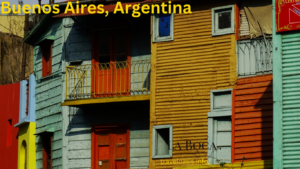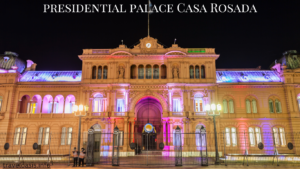Buenos Aires, Argentina
When it comes to vibrant cultures, breathtaking landscapes, and rich histories, few places can match the allure of Buenos Aires, Argentina. This South American gem is known for its passionate embrace of the tango, a dance that echoes the city’s spirit of connection and energy. In this blog post, we’ll journey through Buenos, exploring its tango heritage, captivating neighborhoods, delectable cuisine, and much more. So, grab your dance shoes and join us as we tango through this enchanting destination.
The Allure of Tango
H1: The Heartbeat of Buenos Aires
Tango isn’t just a dance; it’s the very heartbeat of Buenos Aires. Rooted in the city’s working-class neighborhoods, tango emerged as an expression of love, longing, and resilience. The dance captivates locals and visitors today, drawing them into its sensual rhythm.
H2: Dance of Passion
Tango is a dance that speaks the language of passion. The close embrace, intricate footwork, and intense eye contact create a mesmerizing connection between partners. You’ll be transported to a world where emotions flow through every step as you watch tango performances in the city’s numerous milongas (tango dance halls).
Exploring the Neighborhoods
H1: La Boca – Where Colors Come to Life
La Boca is a neighborhood that bursts with vibrant colors and artistic energy. Home to the iconic Caminito Street, this area is a haven for artists, musicians, and dancers. The streets are alive with the sounds of tango music, and you’ll find tango artists passionately sharing their craft with passersby.

H2: Palermo – Where Modernity Meets Tradition
Palermo offers a stark contrast to the historical charm of other neighborhoods. Here, modernity thrives alongside tradition, creating a dynamic atmosphere. You can find upscale tango clubs, where expert dancers take the floor, enchanting audiences with skillful moves.
Indulging in Culinary Delights
H1: A Gastronomic Journey
Every visit to Buenos Aires is complete with savoring its culinary delights. Argentine cuisine perfectly blends flavors influenced by European immigrants and local ingredients. Sink your teeth into succulent cuts of Argentine steak paired with a rich Malbec wine that complements the flavors perfectly.
H2: Empanadas – A Portable Feast
“Empanadas” stands resolute as a cornerstone of Argentine gastronomy, extending an invitation to partake in comfort and cultural heritage within each delectable morsel. These savory pastries cradle various fillings, spanning meat, cheese, and vegetables. A consummate choice for a convenient repast while engrossed in urban exploration.
Immersing in Culture and History
H1: Historic Elegance – Teatro Colon
Teatro Colon is a testament to Buenos Aire’s appreciation for arts and culture. This stunning opera house is renowned for its acoustics and grandeur. Attending a performance here is not just a cultural experience; it’s a journey into the city’s artistic soul.
H2: Plaza de Mayo – A Stage of History
Plaza de Mayo is the political and historical heart of the city. Surrounded by architectural marvels and the presidential palace Casa Rosada, this square has witnessed pivotal moments in Argentina’s history. It’s a place where the past and present converge, creating a sense of significance.

Conclusion
Buenos Aires, Argentina, is a city that dances to its beat, and that beat is undoubtedly tango. From the passionate embrace of the dance to the colorful neighborhoods and mouth-watering cuisine, Buenos Aires offers an experience that engages all your senses. As you wander its streets, you’ll immerse yourself in a world where history, culture, and connection intertwine in a vibrant tapestry.
FAQs
Q1: Is tango challenging to learn for beginners?
Tango can be challenging for beginners due to its intricate footwork and close embrace. However, anyone can learn the basics and enjoy the dance with patience and practice.
Q2: What is the best time to visit Buenos Aires?
Optimal junctures for venturing to manifest during the vernal period (September to November) and the autumnal stretch (March to May), characterized by agreeable climatic conditions conducive to relishing outdoor pursuits.
Q3: Are there tango classes available for tourists?
Many tango schools and dance studios in Buenos Aires offer classes specifically designed for tourists. It’s a fantastic way to immerse yourself in the local culture.
Q4: Can I experience tango outside of dance halls?
Absolutely! Tango performances are not limited to dance halls. You can find street performances, open-air milongas, and even impromptu tango events in various parts of the city.
Q5: What are some other must-visit attractions in Buenos Aires?
Aside from engagements intertwined with the realm of tango, it is imperative to explore landmarks such as the Recoleta Cemetery, the resplendent El Ateneo Grand Splendid Bookstore, and the verdant Buenos Aires Botanical Garden. Each enclave bestows an idiosyncratic lens upon the city’s tapestry of culture and historical evolution.

